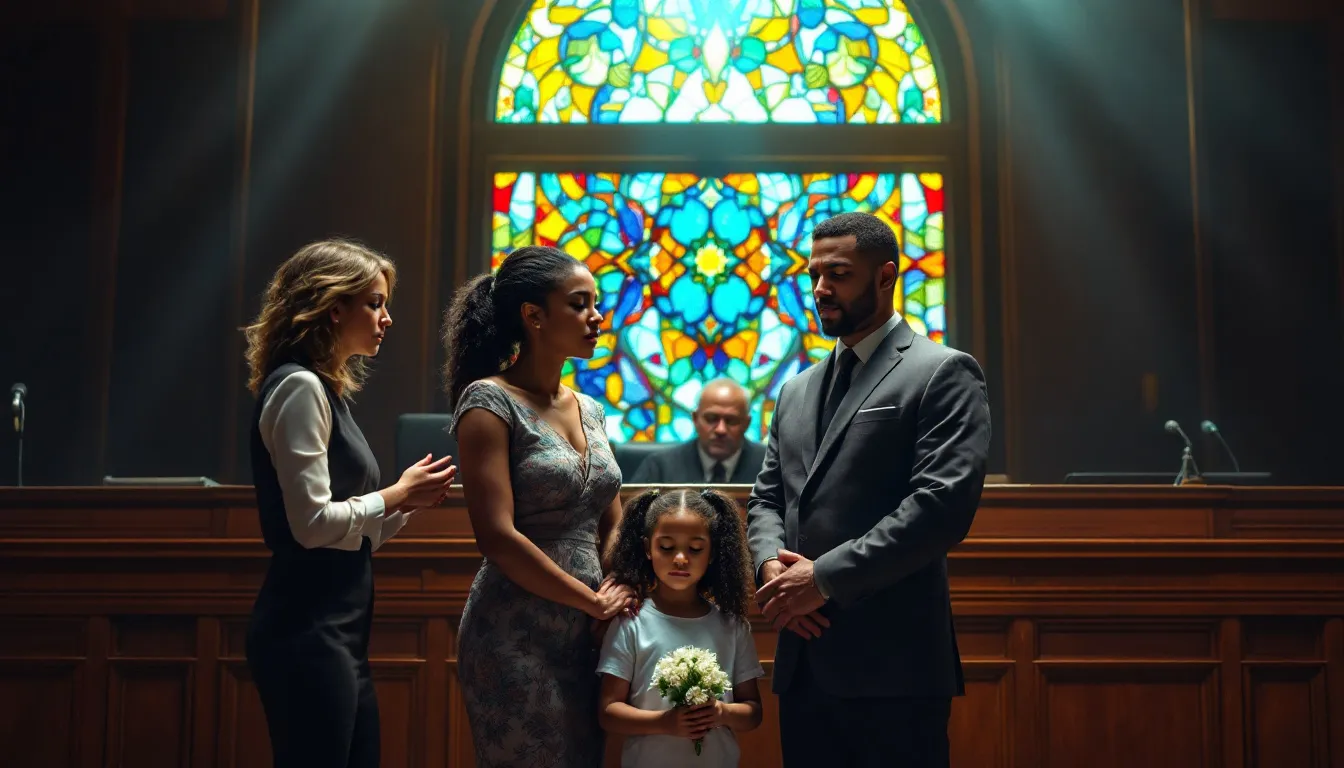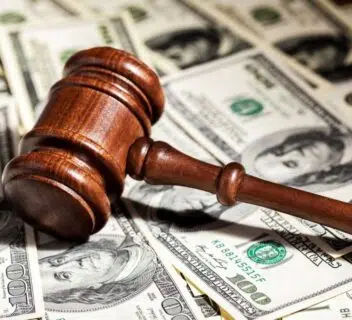Best Victim Impact Statement Example and Writing Tips
Need an example of a victim impact statement example? This article explains what they are, why they matter, and offers an example along with writing tips.
Key Takeaways
- Victim impact statements allow victims to articulate the emotional, physical, and financial effects of an incident, enhancing the court’s understanding of its impact.
- An effective victim impact statement should include detailed descriptions of emotional trauma, physical injuries, and financial burdens, structured clearly for maximum impact.
- Legal assistance — such as important representatives like victim advocates and attorneys — is available to support victims in writing and submitting their statements, ensuring their voices are heard in the judicial process.
Understanding Victim Impact Statements
Victim impact statements are personal accounts detailing the effects of an incident committed on victims and their families. These statements encompass (comprehensively) the physical, emotional, financial, and spiritual impacts of the offense. They allow victims to share their experiences and the profound effects of the incident on their lives.
Writing a victim impact statement can help victims simply articulate their suffering and seek closure.
What is a Victim Impact Statement?
A written or spoken victim impact statement is delivered during the sentencing phase of a trial, enabling victims to communicate the ramifications of the incident on their lives. During this phase, the defense attorney may have access to the victim impact statement and can cross-examine the victim if necessary.
By providing these statements, victims are empowered to recount their experiences and illustrate how they have been affected emotionally, financially, and physically by the incident.
Included in such statements might be:
- Emotional suffering
- Physical harm
- Financial losses
- Spiritual effects
Through victim impact statements, courts gain deeper insight into how extensively an incident has altered a victim’s existence. These impactful accounts may also be conveyed to probation departments and fulfill several judicial functions.
To ensure that their voices are acknowledged within legal proceedings, it’s essential for victims to inquire with prosecutors about when and how they can submit these crucial documents.
Purpose of a Victim Impact Statement
The primary purpose of a victim impact statement is to help the judge understand how the incident has affected the victim and their loved ones. These statements give victims a voice and serve as crucial evidence to build a case against the defendant.
Moreover, these statements can enlighten offenders about the true impact of their actions, potentially fostering accountability. By expressing their fear and trauma, victims can voice their suffering and seek justice.
How Victim Impact Statements are Used in Court
Victim impact statements hold a substantial role in the legal system by conveying both the psychological and economic repercussions that incidents have on victims. These declarations are pivotal for informing court rulings, as they emphasize the personal consequences suffered by victims and support their demand for fair sentencing. During parole hearings, such testimony allows affected individuals and family members to communicate directly with decision-makers about how deeply they’ve been impacted before any verdict is reached.
The opportunity to participate in these proceedings through an impact statement is an established right of victims. When a victim or family member submits this document into official records, it becomes part of what may be openly reviewed documentation within the court case file—this integration ensures that those who preside over judicial matters take into account their narrative.
Flexibility regarding who can deliver these emotional addresses underscores a commitment to accommodating those touched by problematic acts. By permitting anyone designated by the victim to present their statement at trial, courts provide necessary support systems throughout moments fraught with significance.
Components of an Effective Victim Impact Statement

An effective victim impact statement must encapsulate the emotional, physical, and fiscal consequences of an incident to provide the court with a deeper insight into its significant effects on the life of the victim.
Presented as formal paperwork, intimate stories, or letters addressed to the judge, such statements should express in clear terms how deeply affected both daily life and the mental well-being of the victims are. Utilizing leading questions may aid in centering attention on these areas impacted by problematic activity.
Emotional Impact
Including the emotional and mental impact in a victim impact statement is essential. For instance, enduring anxiety and fear could be a consequence of an assault, resulting in challenges for the victim to experience safety even in well-known surroundings. Assault-related impact statements frequently emphasize long-lasting psychological distress and mental implications, reflecting the trauma experienced by the victim.
Communicating these emotional struggles can serve as a means to facilitate closure for those affected while effectively illustrating the complete emotional load imposed on them by their ordeal.
Physical Impact
It is crucial to articulate the tangible consequences of incidents. For many victims, the physical injuries sustained can feel like a life sentence, with ongoing pain and limitations. Victims must convey any physical manifestations of harm they’ve endured, like abrasions, contusions, tenderness, or lacerations. Such depictions underscore the gravity of the bodily injury and how victims continue to physically feel sustained anguish that could restrict movement or necessitate prolonged rehabilitation.
Highlighting this information accentuates how such experiences intrude upon a victim’s daily existence.
Financial Impact
Another crucial aspect of a victim impact statement is the inclusion of financial losses. Victims must detail any medical bills, lost wages due to an inability to perform their job, and costs associated with counseling or replacing damaged property.
Emphasizing these economic consequences helps illustrate the full extent of hardship caused by the incident, emphasizing why proper compensation or restitution is necessary.
Writing Your Victim Impact Statement
Composing a victim impact statement requires articulating one’s own experiences to demonstrate the emotional, physical, and financial consequences stemming from the incident. Consider submitting a written statement to ensure your experiences are formally documented. Consider the alterations in your life due to the incident and articulate these transformations within your impact statement.
Although adhering to guidelines is beneficial, it is vital to incorporate personal expression in order to truly capture the essence of how significantly the incident has affected you.
Do’s and Don’ts
When writing your victim impact statement, keep several do’s and don’ts in mind. Include detailed descriptions of physical injuries and the duration of recovery to illustrate the severity of the impact. Describe specific medical treatments and how the incident has affected daily activities and overall quality of life. Use ‘I feel’ statements and express emotions clearly to foster empathy from the court.
Avoid using overly technical language and keep your statement simple and clear. Refrain from expressing anger towards the court or the offender; focus on sharing personal experiences. Avoid exaggerating details, blaming the defendant, and using unsuitable language.
Taking breaks during the writing process can help manage emotional strain and prevent feeling overwhelmed, so it’s beneficial to spend time taking as many breaks as needed.
Structuring Your Statement
Crafting a well-structured victim impact statement can significantly increase its potency. Begin by noting down your preliminary reflections. Illustrate the ways in which the incident has transformed your day-to-day existence and interpersonal connections.
Employ bullet points to emphasize crucial details, improving both readability and structure and fostering a clear and poignant account of how you’ve been affected as a victim.
Reviewing and Editing
Reviewing and editing your victim impact statement is crucial for ensuring clarity and strengthening the impact of your message. Consider having someone else review your statement to provide feedback and ensure your thoughts are conveyed effectively.
Sample Victim Impact Statements
Examples of victim impact statements can be potent tools that express the personal and emotional aftermath experienced by a victim following an incident. They offer guidance on how to craft an impactful statement, presenting a structure for victims to utilize when writing their own statements.
Example 1: Car Accident
An individual who has suffered as a result of a vehicular accident may detail the profound emotional suffering, physical incapacities, and substantial medical expenses that have arisen from their injuries in a victim impact statement.
If you or a loved one have experienced a car accident, call 1-800-THE-LAW2 today for a free legal consultation with an attorney in our network.
Example 2: Assault
Individuals who have suffered from an assault frequently undergo severe emotional distress, such as fear, anxiety, and depression. They might also face persistent chronic pain due to injuries sustained in the incident that may necessitate continuous medical care. They often endure financial strain owing to accumulating medical expenses and loss of income.
The repercussions for a victim after an assault are profound and enduring. They typically experience significant alterations in their day-to-day living well beyond the initial physical harm inflicted.
Tips for Family Members

Providing practical support and articulating the overall effect of the incident on all family members can greatly affect a victim’s emotional healing as well as their composition of the impact statement.
Supporting the Victim
Assisting a victim in crafting their impact statement means providing both emotional support and pragmatic assistance. Being present to listen as they express their emotions can help them convey their experiences with greater clarity. Offering encouragement and creating a tranquil environment for contemplation may lighten the emotional load of the victim.
Offering practical aid, which might include helping with drafting the statement or arranging for someone else to read it aloud, can prove immensely advantageous as well.
Writing as a Family Member
In crafting a victim impact statement, it is essential for family members and other relatives to articulate the comprehensive effect that the incident has had on their family unit. By integrating particular stories from various family members, they can fortify the collective testimony.
By intertwining personal accounts provided by multiple family members, they are able to present an extensive picture of how the incident has impacted them. A cohesive expression from all affected kin amplifies the resonance of their narrative and potentially heightens its influence before the court.
Legal Assistance and Resources

Support and guidance in crafting victim impact statements are accessible through various legal avenues, including the services of prosecuting attorneys, witness coordinators for victims, private lawyers, and advocates dedicated to assisting victims.
Should you require clarification or assistance regarding a victim impact statement, do not hesitate to contact us at 1-800-THE-LAW2.
Contacting a Victim Advocate
Victim advocates are essential in aiding victims as they compose their impact statements, offering support through resources such as hotlines and community assistance services.
For aid in crafting these critical documents, victims may turn to professionals like prosecuting attorneys and victim advocates. The Victim/Witness Unit or a dedicated Victim Advocate can offer substantial help when it comes to preparing your statement.
Legal Consultation
Legal consultation helps victims understand their rights and the legal process regarding victim impact statements.
For a free consultation with a lawyer in our network, contact 1-800-THE-LAW2.
Summary
Victim impact statements are powerful tools that allow victims to convey the full extent of the incident’s impact on their lives. By including emotional, physical, and financial effects, victims can help the court understand their suffering and advocate for appropriate sentencing. Writing and structuring the statement effectively, with support from family members and legal resources, can make this challenging process more manageable. Remember, your voice matters, and your story deserves to be heard.
Frequently Asked Questions
What is a victim impact statement?
A victim impact statement is a personal account describing how an incident has affected an individual, including emotional, psychological, and financial repercussions beyond just physical injuries.
This statement plays a crucial role in conveying the true impact of the incident to the court.
What are the purposes of victim impact statements?
Victim impact statements grant those who have suffered from an incident the opportunity to convey their trials and feelings, simultaneously acting as vital evidence bolstering the case against the accused.
These statements are intended to guarantee that the consequences of the problematic act on victims are recognized within legal proceedings.
Are victim impact statements used in court?
Yes, victim impact statements are utilized in court to illustrate the effects of the incident on the victim, thereby supporting the overall case.
What should a victim impact statement focus on?
A victim impact statement should focus on the specific ways in which the incident has affected the victim’s life, encompassing emotional, physical, mental, and financial consequences.
This ensures the court understands the full extent of the harm caused.
What are some do’s for writing a victim impact statement?
When writing a victim impact statement, you should use “I feel” statements to express your emotions clearly and ensure someone reviews your statement for proper spelling and grammar.
This approach enhances the statement’s effectiveness and clarity.




